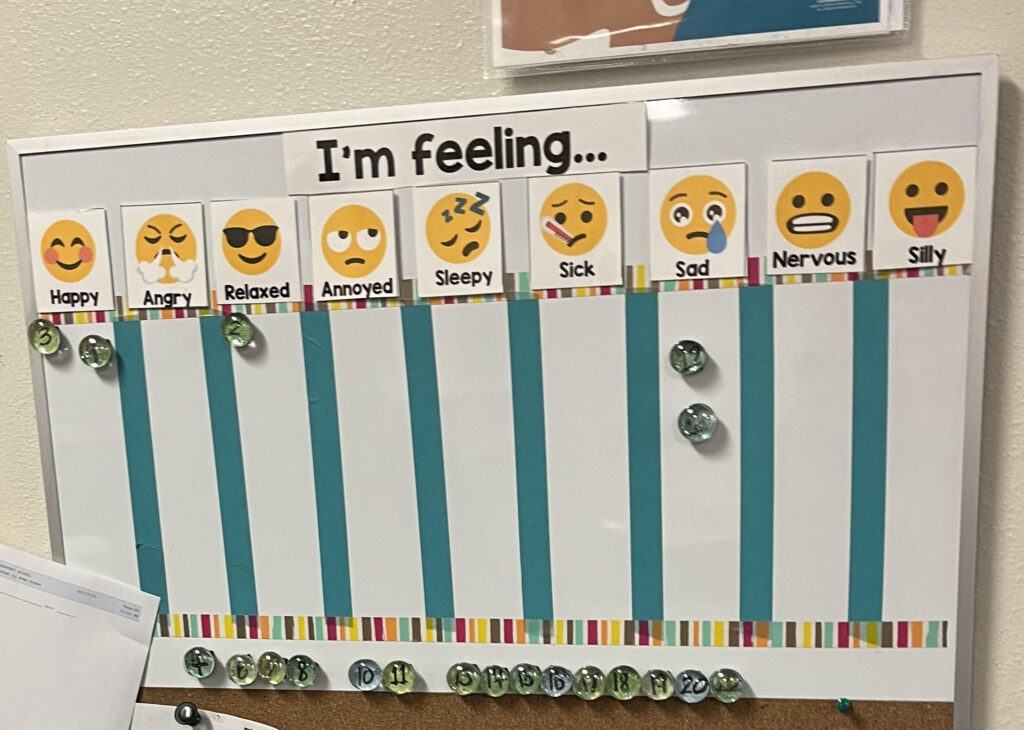As summer arrives, it’s an ideal time for campus and district administrators to reflect on the past year and discuss ways to enhance the upcoming school year. One valuable exercise during this period is to examine your leadership shadow – the influence and impact you have on your team and organization. Understanding the shadow you cast can reveal insights into how your behaviors and decisions shape your team’s morale and productivity. By taking the time to reflect and make intentional adjustments, you can foster a more positive and effective leadership presence, setting the stage for a successful year ahead.
Understanding Your Leadership Shadow

The concept of a leadership shadow refers to the influence and impact that leaders have on their teams and organizations, often extending beyond their immediate actions. This shadow encompasses the attitudes, behaviors, and decisions of a leader, which collectively shape the culture and environment within their sphere of influence. For district administrators and technology directors, understanding this shadow is crucial because it highlights the pervasive effect a leader has on their team’s morale, productivity, and overall climate.
Leaders’ actions, behaviors, and attitudes are constantly observed by their team members and can leave a lasting impression. For example, the way a technology director handles stress during a district-wide system upgrade or communicates during challenging times like budget cuts sets a standard and expectation for the team. Positive behaviors can inspire and motivate, while negative ones can lead to disengagement and resentment. The lasting impression left by these actions often determines the team’s cohesiveness and overall effectiveness, impacting everything from project completion rates to staff turnover.
Self-awareness is a critical component in recognizing and understanding the shadow a leader casts. By regularly reflecting on their actions and seeking feedback from colleagues and team members, leaders can gain valuable insights into how they are perceived. For instance, a district administrator might conduct anonymous surveys to gather honest feedback on their leadership style. This awareness allows leaders to make intentional adjustments to their behavior, ensuring their impact is aligned with their values and the goals of the organization. Embracing self-awareness fosters a more thoughtful and impactful leadership style that can positively influence the entire organization, from administrative offices to classroom environments.
Impact on Team Morale and Culture

A leader’s demeanor plays a pivotal role in shaping team morale and workplace culture. When leaders exhibit positivity, approachability, and empathy, they create an environment where team members feel valued and motivated. Conversely, a leader who is consistently negative, unapproachable, or unsupportive can foster a culture of fear, disengagement, and low morale. For example, a tech director who actively listens to teachers’ concerns about new software implementations can build a supportive and collaborative environment, while one who dismisses these concerns can create resistance and frustration.
Positive leadership shadows are characterized by behaviors such as recognizing and celebrating team achievements, providing constructive feedback, and demonstrating a commitment to professional growth. For instance, a tech director who regularly acknowledges the hard work of their team and encourages innovation can inspire creativity and a strong sense of purpose. Conversely, negative leadership shadows might include micromanaging, displaying favoritism, or neglecting to address conflicts. These actions can lead to decreased motivation, increased turnover, and a toxic work environment, undermining the district’s goals and objectives.
The behavior of a leader has a ripple effect that extends throughout the team and organization. When leaders set a positive example, it encourages similar behaviors among team members, promoting a culture of collaboration, respect, and high performance. This positive dynamic can enhance overall productivity and foster a supportive work environment. Conversely, negative behaviors from leaders can cause discord, reduce morale, and hinder productivity, creating a challenging and less cohesive team atmosphere. Understanding this ripple effect underscores the critical importance of mindful and intentional leadership, particularly in education settings where collaborative efforts are essential for success.
Guiding by Example

Leading by example is a fundamental aspect of effective leadership. When leaders embody the values, work ethic, and behaviors they expect from their team, they build credibility and respect. For instance, a district administrator who consistently demonstrates a commitment to student achievement and staff development sets a powerful example for their team to follow. This approach creates a powerful model for team members to follow, demonstrating that the leader is not above the standards they set. By consistently aligning actions with words, leaders can foster a culture of accountability, integrity, and excellence, inspiring their team to strive for the same standards.
To effectively model desired behaviors and values, leaders can adopt several strategies. First, they should communicate their expectations clearly and consistently, ensuring everyone understands the standards and goals. For example, a tech director can set clear guidelines for cybersecurity practices and consistently follow them themselves. Second, leaders should actively demonstrate these behaviors in their daily interactions and decision-making processes, showing transparency and fairness. Third, recognizing and rewarding team members who exemplify these values reinforces their importance. Additionally, leaders should be open to feedback and willing to adapt, showing that continuous improvement is a shared value.
Consistency and integrity are crucial in building trust and respect within a team. When leaders are consistent in their actions and decisions, they create a stable and predictable environment, reducing uncertainty and fostering trust. Integrity involves being honest, ethical, and accountable, even when faced with difficult choices. Leaders who consistently uphold their values and commitments demonstrate reliability and earn the respect of their team. This trust and respect form the foundation of a strong, cohesive team that is more likely to collaborate effectively and achieve its goals, whether it’s implementing new educational technologies or improving student outcomes.
Continuous Improvement and Reflection

Seeking feedback and reflecting on their impact are essential practices for leaders committed to continuous improvement. By actively soliciting input from team members, peers, and mentors, leaders can gain valuable perspectives on their strengths and areas for growth. Reflecting on this feedback helps leaders understand the real effects of their actions and decisions. For instance, a district administrator might use performance reviews and feedback sessions to gather insights and make necessary adjustments. Regular self-assessment and reflection sessions can illuminate blind spots and foster a culture of openness and improvement within the team, encouraging everyone to grow together.
Continuous personal and professional development is crucial for effective leadership. Leaders should prioritize ongoing education, such as attending workshops, seminars, and pursuing advanced certifications relevant to their field. For example, a tech director might attend conferences on the latest educational technologies to stay ahead of trends. Reading widely and staying current with industry trends and best practices can also enhance their knowledge and skills. Additionally, engaging in mentoring and coaching relationships provides opportunities for both learning and teaching. Setting specific, measurable development goals and tracking progress can help leaders stay focused and motivated in their growth journey.
Adjusting and improving the leadership shadow requires deliberate and practical steps. Mentoring and coaching are powerful tools that provide personalized guidance and support. Leaders can benefit from both being mentors and seeking mentors themselves. Learning from other leaders, whether through networking, observing, or studying their approaches, offers valuable insights and inspiration. For example, a district administrator might shadow a peer in another district to gain new perspectives. Regularly reviewing and reflecting on one’s leadership style, coupled with a willingness to make necessary adjustments, ensures that the shadow cast is positive and impactful. Implementing these practices can lead to sustained personal growth and a more effective, respected leadership presence.
Invitation to Reflect on Our Leadership Shadows

I invite you to work with your team to examine both your personal and departmental shadows. This reflective activity can be a valuable part of your next staff meeting, fostering self-awareness and promoting a positive organizational culture.
Activity Description:
Begin by explaining the concept of a leadership shadow and its significance. Emphasize that everyone, regardless of their role, casts a shadow that influences the team’s culture and effectiveness. Distribute sticky notes or index cards and pens to all participants. Ask each person to spend a few minutes reflecting on their own behaviors and actions, noting down one positive behavior they believe positively impacts the team and one behavior they believe might negatively impact the team. Assure them that this exercise is anonymous to encourage honest reflections.
Collect the sticky notes and randomly select a few to read aloud, or have participants stick their notes on a designated wall or board. As you review the notes, group similar behaviors together to identify common themes. Encourage open, respectful discussion about the examples shared, focusing on understanding rather than judgment.
Divide the participants into small groups and assign each group one of the common themes identified. Ask each group to discuss the potential impact of the behaviors on the team and organization, strategies for reinforcing positive behaviors, and approaches for addressing negative behaviors.
Reconvene the entire group and have each small group share their discussion points and suggestions. Create a collective action plan on a flip chart or whiteboard, including specific steps to promote positive behaviors, strategies to address negative behaviors, and personal commitments from each participant on what they will work on improving.
Summarize the key takeaways from the activity and emphasize the importance of ongoing self-awareness and reflection. Encourage participants to support each other in maintaining positive leadership shadows and to continue the conversation beyond the meeting.
By engaging in this reflective exercise, you can help your team understand and positively influence the shadows they cast, fostering a culture of openness and continuous improvement.







